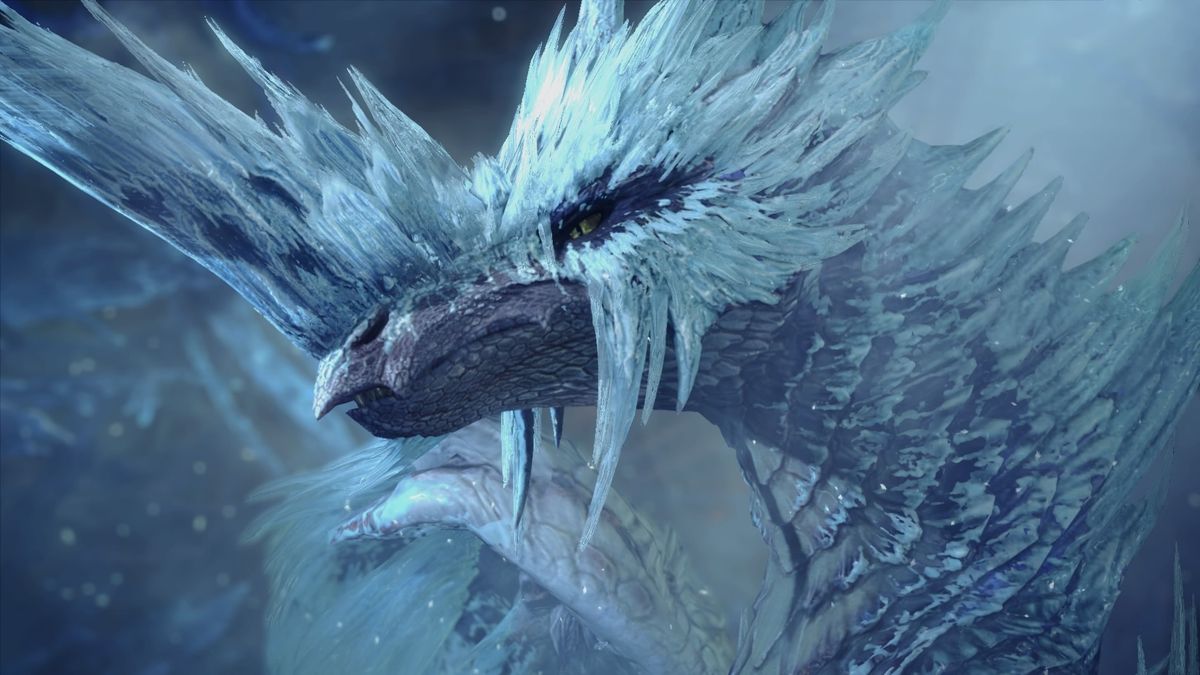(Photo courtesy of: PC Gamer) “Developer Campcom succeeds with “Monster Hunter World: Iceborne”.”
Jesse Nguyen
Connector Editor
After a six-year-long lifespan in a two-decade-long franchise, “Monster Hunter World: Iceborne” is as popular as ever with a resurgence of players returning after the trailer for “Monster Hunter Wilds” came out.
“Monster Hunter World,” developed by Capcom, is an action role-playing game. It was released on Jan. 18, 2018, for PlayStation 4 and Xbox One and for Windows on Aug. 9, 2018. Being the first “Monster Hunter” made for home consoles, it received critical acclaim. It revolutionized “Monster Hunter” through its emphasis on ecology, no loading screens, and outstanding graphics and controls, making combat and movement significantly smoother than previous entries.
The DLC expansion, “Monster Hunter World: Iceborne,” was released on Sept. 6, 2019, for PlayStation 4 and Xbox One and for Windows on Jan. 9, 2020.
“Iceborne” introduces a couple of new areas, notably The Hoarfrost Reach and the Guiding Lands. The Hoarfrost Reach is a snow-covered region that introduces a couple of snow dwelling monsters. The Guiding Lands is a large-scale map that combines all previous regions into one area. Players can stay here indefinitely and get unique drops from monsters they wish to lure out. It’s “Iceborne’s” form of an endgame, akin to an arcade boss rush, and it is much more engaging than the previous RNG reliant system used in “World.”
The story in “Iceborne” is serviceable. It follows the same basic storyline “World” had, where monsters start behaving weirdly, a new elder dragon appears, etc. Its primary function is to make players fight Monsters, which it does. Most cutscenes are cinematic and engaging, but remain unskippable in “Iceborne,” which may feel frustrating to players who wish to get straight to the action.
The expansion adds beloved monsters to the roster, such as fan favorite Thunder Wolf Zinogre and the winged Panther Nargacuga. There’s also a handful of completely new monsters to the franchise that are incredibly unique and have the same ecological semi-realism that makes them perfectly fit in with the rest of the cast.
With these new and returning monsters come their improved battle themes. Maintaining the same classic melodies, the new orchestral-level soundtrack makes every encounter feel intense and exhilarating. The monsters in “Iceborne” are even more erratic and they hit twice as hard than in “World.” Learning and predicting their attack patterns provides players with a rewarding and even more challenging experience than in “World.”
Additionally with these new monsters, “Iceborne” drastically improves an aspect of “World” that was heavily criticized, armor and weapon design. Many weapons now have unique designs instead of monster parts slapped on a bone base, and armor sets look more vibrant and stylish. Some weapons still use a slap-on design, though it’s very few. It can just be a bit frustrating seeing something so iconic missing from “Iceborne,” such as the Glavenus Greatsword.
When it comes to combat, Iceborne added a couple of moves and mechanics to every existing weapon, as well as adjusting them. These changes greatly benefitted the balance of “Monster Hunter World.” Over-tuned weapons remain strong but not overpowered, and previously weaker weapons are now viable. The new moves are smoothly integrated and have excellent sound design and animations.
Keeping in line with adding a new gimmick for every new entry in the series, “Iceborne” introduces a mechanic that drastically changes the core combat loop of “Monster Hunter,” the clutch claw. Previously, the clutch claw was just a tool for hunters to shoot projectiles. In “Iceborne,” hunters can clutch onto the monsters themselves, and either launch a monster into a wall to deal massive damage, or tenderize a monster, providing a weak spot.
Some weapons smoothly implement the claw into their move sets, such as Lance having a counter that immediately latches onto the monster. But Longswords, for instance, must pause in combat, aim their claw, latch on and tenderize.
The clutch claw, while a unique concept, often feels clunky. At best, it provides powerful, satisfying attacks. At worst, the clutch claw breaks the flow of combat and punishes you for not using it. To compensate for the power of clutch claw, monsters have bloated health pools, among the highest in the series. No adjustments were made to the monsters in the base game. As a result, the base game is significantly easier than it originally was. Completely new players may be thrown off by the huge difficulty spike once they reach “Iceborne” content, especially with regards to the final bosses of “Iceborne,” which are among the most difficult in the entire series.
“Monster Hunter World: Iceborne” did an excellent job in improving and expanding upon the success of “World.” Though the clutch claw at times can feel clunky, the overall feel and quality of “Iceborne” is superb and provides one of the most rewarding combat experiences found in any video game today.
Overall Grade: A




